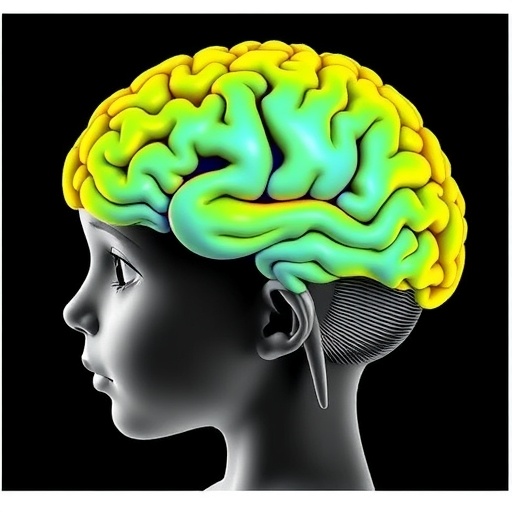In a groundbreaking study published in BMC Genomics, researchers have unveiled a pioneering technique that sheds light on the intricate landscape of mitochondrial DNA deletions at an unprecedented cell-type resolution, leveraging single-cell RNA sequencing technology. The research team, led by Nakagawa et al., has successfully developed a novel tool named MitoDelta, which enhances our understanding of mitochondrial genetic instability—an increasingly recognized factor in various diseases, including cancer, neurodegeneration, and age-related disorders.
Mitochondrial DNA (mtDNA) is quintessential for energy production within the cell. Unlike nuclear DNA, mtDNA is inherited maternally and is more susceptible to mutations and deletions, which may contribute to mitochondrial dysfunction. Traditional methods have struggled to pinpoint specific deletions across different cell types, often leading to a limited understanding of their pathogenic roles. MitoDelta aims to address these challenges, offering a powerful approach to identify and quantify mtDNA deletions with refined specificity.
The implications of mitochondrial dysfunction are vast. Studies have demonstrated that dysregulation in mitochondrial genes can lead to a host of disorders, from metabolic syndrome and diabetes to cardiomyopathy and neurodegenerative diseases such as Alzheimer’s and Parkinson’s. MitoDelta, therefore, represents a significant leap forward in the field of genomics, enabling researchers to connect specific mtDNA deletions to these complex diseases based on actual cellular environments.
This innovative tool utilizes a machine learning-based algorithm to analyze single-cell RNA sequencing data, drawing on a rich dataset that permits fine-tuned analytics at an individual cell level. By applying this methodology, the research team could discriminate between healthy and mutated mtDNA profiles, showcasing the dynamic range of mitochondrial health within heterogeneous populations of cells. Such precision is critical, as the influence of cellular context can significantly alter the interpretation of mitochondrial genetic alterations.
The validation of MitoDelta involved rigorous testing against established methodologies, with the researchers demonstrating its superior sensitivity and accuracy in detecting mtDNA anomalies. Once reliably established, the tool was employed in multiple experimental settings, including model organisms and human-derived cell lines, providing robust evidence of its applicability in diverse biological systems. This versatility ensures that MitoDelta could become an indispensable asset for researchers investigating the multifactorial nature of diseases involving mitochondrial dysregulation.
Additionally, the study underscores the importance of cell-type resolution in understanding mitochondrial pathogenesis. Different cell types exhibit varied sensitivities to mtDNA deletions, which can influence disease presentation and progression. For instance, neural cells may respond differently to specific deletions compared to muscle cells, thereby necessitating a tailored approach when investigating inherited mitochondrial disorders. MitoDelta’s ability to pinpoint these differences provides a more nuanced understanding of mtDNA related diseases.
One particularly groundbreaking aspect of MitoDelta is its potential to accelerate the screening of therapeutic interventions aimed at mitigating mitochondrial dysfunction. By unveiling the precise types and locations of deletions within mtDNA, targeted therapies can be designed more effectively. This is particularly crucial in developing disease-modifying therapies for neurodegenerative diseases, where early intervention is often pivotal for improving outcomes.
Furthermore, the real-time analytics capabilities of MitoDelta offer compelling prospects for clinical applications. As the tool integrates seamlessly with existing single-cell RNA sequencing platforms, it enables clinicians and researchers to monitor mitochondrial health dynamically, paving the way for personalized medicine strategies in treating mitochondrial disorders. The advent of such precision medicine could dramatically transform patient care by tailoring interventions based on individual genetic profiles.
The potential ramifications of MitoDelta extend beyond therapeutic applications. Researchers can utilize this tool to unravel the molecular underpinnings of age-related mitochondrial decline, a well-documented phenomenon affecting cellular function. By identifying specific mtDNA deletions and their consequences on cellular physiology, insights may inform broader strategies for healthspan and lifespan extension, ultimately contributing to better management of age-associated diseases.
As the study illustrates, the digital revolution in genomic analysis continues to empower scientists to address longstanding questions in biology. With tools like MitoDelta, the field of mitochondrial genomics is entering a new era of discovery, one that promises to elucidate the complexities of cellular energy metabolism and its wider implications for health and disease.
In conclusion, Nakagawa et al.’s work with MitoDelta not only provides critical insights into mitochondrial pathophysiology but also propels forward the practical application of genomic technologies in biomedicine. As researchers delve deeper into the nuances of mtDNA alterations, the unfolding narrative is set to shine a light on new therapeutic avenues, ultimately enhancing our comprehensive understanding of human health.
The burgeoning field of mitochondrial research thus stands at the precipice of transformation, driven by innovative tools and technologies such as MitoDelta. The effort to enhance our understanding of the fluid dynamics of mitochondrial DNA deletions serves as a pivotal chapter in the evolution of genetic research, with potential benefits resonating throughout the clinical landscape as well as for basic science.
In the coming years, it will be fascinating to observe how MitoDelta and similar innovations shape the trajectory of mitochondrial research, driving further discoveries and potentially revolutionizing the management of diseases linked to mtDNA alterations. The journey of exploration will undoubtedly continue, fueled by the desire to decode the mysteries of mitochondrial genetics and its fundamental role in cellular health.
As the landscape of single-cell genomics expands, the importance of scalable and accurate tools like MitoDelta cannot be overstated. The future of mitochondrial research is bright, cultivated by a generation of scientists eager to unlock the secrets of cellular energy production, with the knowledge that MitoDelta is leading the way for future breakthroughs in the understanding and treatment of mitochondrial dysfunction.
Through continued collaboration and innovation, the scientific community is poised to make monumental strides in our quest to harness the power of mitochondria for improved health outcomes, revealing the potential for truly personalized interventions in mitochondrial disorders as well as related conditions.
The study by Nakagawa et al. indeed marks a seminal moment in mitochondrial genomics, with MitoDelta poised to become a cornerstone of future research endeavors aimed at unraveling the complexities of human health and disease.
Subject of Research: Mitochondrial DNA deletions using single-cell RNA sequencing.
Article Title: MitoDelta: identifying mitochondrial DNA deletions at cell-type resolution from single-cell RNA sequencing data.
Article References:
Nakagawa, H., Shima, Y., Sasagawa, Y. et al. MitoDelta: identifying mitochondrial DNA deletions at cell-type resolution from single-cell RNA sequencing data.
BMC Genomics 26, 810 (2025). https://doi.org/10.1186/s12864-025-11931-0
Image Credits: AI Generated
DOI: 10.1186/s12864-025-11931-0
Keywords: mitochondrial DNA, deletions, single-cell RNA sequencing, MitoDelta, mitochondrial dysfunction, precision medicine, genomics, cell-type resolution.
Tags: age-related disorders and mtDNABMC Genomics study findingscancer and mitochondrial dysfunctionenergy production in cellsimplications of mitochondrial dysfunctionmetabolic syndrome and mitochondrial healthmitochondrial genetic instabilityMitoDelta mitochondrial DNA deletionsneurodegenerative diseases researchquantifying mtDNA deletionssingle-cell RNA sequencing technologytraditional methods for mtDNA analysis






